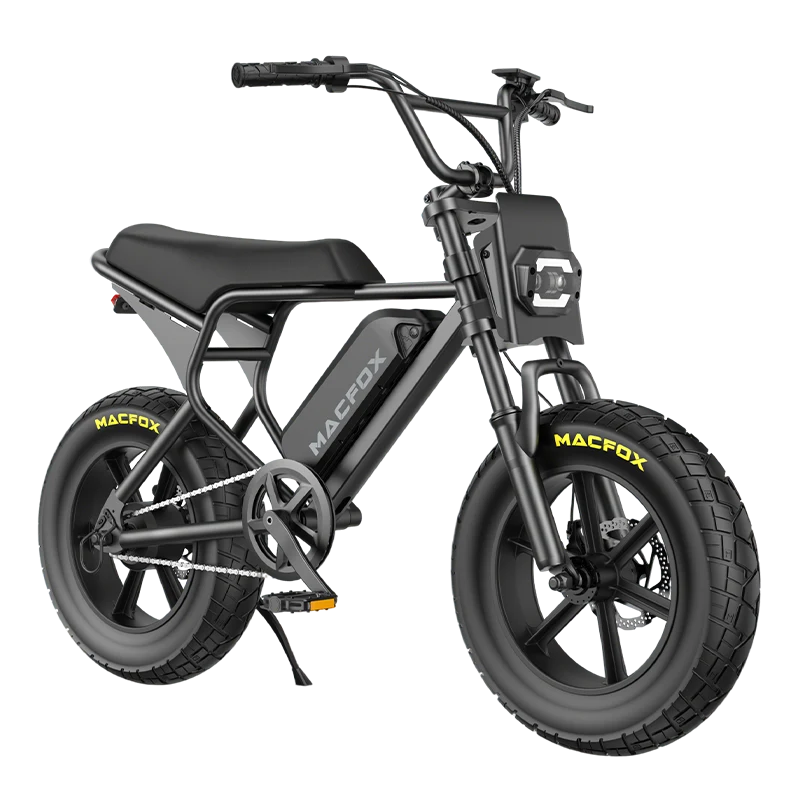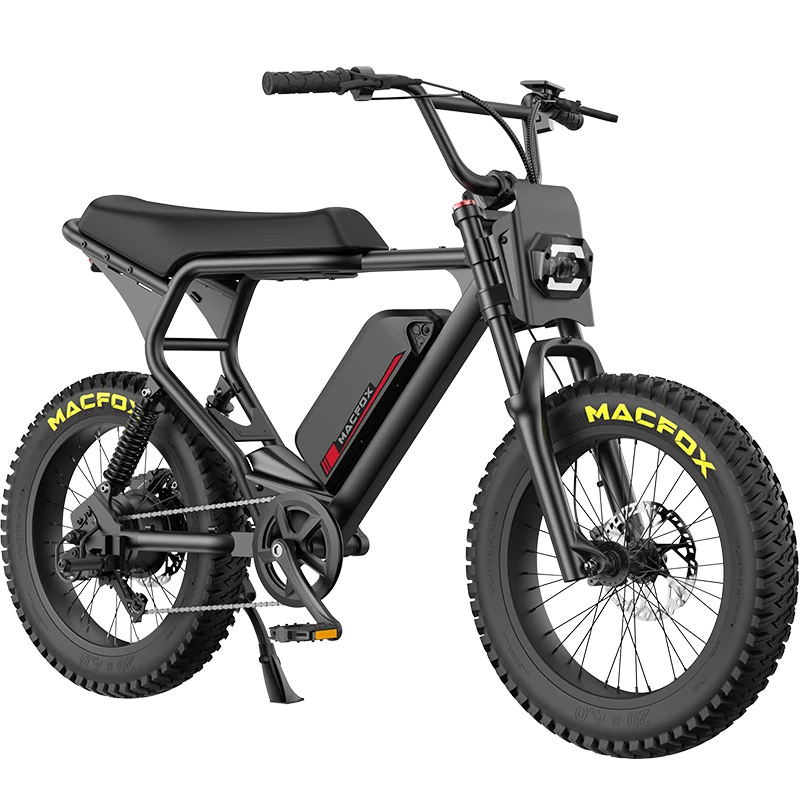When shopping for an electric bike, one question almost everyone asks is, “Why does it weigh so much?” It’s a legitimate concern. The weight of an e-bike affects everything from how easy it is to ride up a hill to whether you can lift it onto a bike rack. But the good news is – once you understand how much an e-bike weighs and how it affects your ride, you’ll have the confidence to choose the right model. Let’s take a deeper look.
How Much Does an E-Bike Weigh?

Most e-bikes weigh between 40 and 80 pounds—about the same as a medium-sized dog. For comparison, your average road bike feels like lifting a chihuahua (15–25 pounds), while an e-bike is more like hoisting a golden retriever. But where does all that weight come from? Let’s break it down:
-
The battery – Think of this as your e-bike’s gas tank. A standard battery weighs 6–10 pounds, but larger ones (like 750Wh models) add 2–3 extra pounds to extend your range.
-
The motor – Mid-drive motors pack more punch for hills but weigh slightly more (7–10 pounds) compared to hub motors.
-
The frame – Material choices matter here. Aluminum keeps things light and affordable, steel adds durability with extra heft, and carbon fiber is featherlight but comes with a luxury price tag.
-
The extras – Fenders, racks, suspension systems, and even tire choice add up. Fat tires for snow or sand can tack on 5–10 pounds, while slim commuter tires keep things lean.
Here’s the twist: Once you start pedaling, the motor’s assist makes even a 70-pound e-bike feel surprisingly zippy. The weight only bites when you’re wrestling it onto a car rack or up a flight of stairs.
Read More: E-Bike Anatomy 101: Inside Your Electric Beast
What’s the Weight of an E-Bike Without the Battery?
Remove the battery, and you’ll shed 6–10 pounds instantly. A typical 50-pound commuter ebike drops to 40–44 pounds without its battery, making it easier to carry upstairs or load into a car.
But there’s a catch: riding without the battery feels like pedaling through wet sand. You’re still hauling the motor and reinforced frame, which adds 15–20 pounds compared to a regular bike. Save the battery removal for transport—keep it installed for actual rides.
Breaking Down the Weight
You might be wondering: If traditional bikes can be so light, why do e-bikes feel like lifting a small piece of furniture? The answer lies in the components that make e-bikes unique. Unlike regular bikes, e-bikes need to support a motor, battery, and reinforced frame—all of which add pounds. Let’s look at what’s really tipping the scales.
Battery Size
The battery is the heart of an e-bike—and one of its heaviest parts. Think of it like a water bottle: the bigger the bottle, the more water it holds, but the heavier it gets. A standard e-bike battery (500Wh) weighs around 6–8 pounds, while high-capacity models (750Wh+) can reach 10–12 pounds.
Why does this matter?
-
A larger battery gives you more range (e.g., 60+ miles) but adds weight.
-
A smaller battery keeps the bike lighter but limits rides to 20–30 miles.
It’s a trade-off between convenience and practicality. For daily commuters, a mid-sized battery strikes the best balance. For adventure riders, the extra weight of a big battery is worth the freedom to explore farther.
Read More: What Size Battery Is Best for Electric Bike
Motor Type
E-bike motors come in two flavors: mid-drive and hub-drive. Mid-drive motors sit near the pedals, providing better balance and hill-climbing power. But they’re heavier—adding 3–5 pounds compared to hub motors, which are tucked into the wheel. Hub motors keep the bike lighter but might leave you grinding gears on steep inclines.
Frame Materials
The frame’s material plays a huge role in weight:
-
Aluminum frames are the crowd favorite—lightweight, rust-proof, and affordable.
-
Carbon fiber shaves off pounds but costs as much as a luxury vacation.
-
Steel frames, while heavy, are nearly indestructible. They’re the go-to for cargo e-bikes hauling groceries or kids.
Design Priorities
E-bikes are built for specific jobs, and their weight reflects that:
-
Folding models shed pounds for portability but skimp on power.
-
Mountain e-bikes pack on suspension and fat tires, pushing weights to 70+ pounds.
-
Fat-tire beasts (60–80 pounds) thrive in snow and sand but feel like pushing a wheelbarrow on pavement.
E-Bike vs. Traditional Bike Weight
Yes, e-bikes are heavier—but they’re playing a different game. A traditional bike’s weight matters because you provide all the power. With an e-bike, the motor compensates. For example:
-
A 55-pound e-bike feels lighter to pedal than a 20-pound road bike.
-
However, lifting it onto a rooftop rack will remind you of its true heft.
The takeaway? Judge an e-bike by how it rides, not just the spec sheet.
Does E-Bike Weight Drain the Battery Faster?
Absolutely. Heavier bikes force the motor to work harder, especially on hills or rough terrain. A 10-pound weight difference between two e-bikes can reduce range by 10–15%. For example:
-
A 45-pound e-bike with a 500Wh battery might reach 50 miles.
-
A 55-pound version with the same battery could drop to 40–45 miles.
Your own weight matters too. Add gear or a passenger, and the battery drains even faster. Pro tip: Lower the assist level on flat roads to save power.
Lightweight vs. Heavy E-Bikes
Lightweight (30–50 pounds)
-
Perfect for: City commuters, apartment dwellers, frequent travelers.
-
Trade-offs: Smaller batteries (20–40 mile range), less power for steep hills.
Heavy-duty (60–80 pounds)
-
Perfect for: Off-road trails, cargo hauling, snowy or sandy terrain.
-
Trade-offs: Harder to transport, shorter range if pushed to its limits.
Real-world example:
-
A 38-pound folding e-bike slips under an office desk but struggles on mountain trails.
-
A 75-pound fat-tire e-bike plows through snowdrifts but needs a ramp for car transport.
5 Simple Hacks to Manage E-Bike Weight
-
Pop out the battery before lifting – instantly save 6–10 pounds.
-
Swap knobby tires for slicks – thinner tires reduce weight and roll faster.
-
Skip non-essential accessories – that 5-pound lock might live better in your backpack.
-
Clean your bike after muddy rides – dried mud adds sneaky extra weight.
-
Lift with your legs – bend knees, keep back straight, and avoid sudden movements.
E-Bike Weight by Type
| Type | Weight Range | Best Use Case |
|---|---|---|
| Folding | 30–50 lbs | Subway commutes, small spaces |
| Commuter | 50–70 lbs | Daily errands, urban riding |
| Mountain | 60–80 lbs | Rocky trails, steep climbs |
| Fat-Tire | 60–80 lbs | Snow, sand, off-road adventures |
| Cargo | 70–100 lbs | Grocery runs, kid transport |
FAQs
Can I make my e-bike lighter?
Yes, but it’s pricey. Swap steel parts for aluminum or carbon fiber, and choose a smaller battery.
Do heavy e-bikes break more easily?
Not if they’re built for it. Cargo e-bikes use reinforced frames – just stay within the weight limit.
Why does my e-bike feel sluggish uphill?
Gravity doesn’t care about your motor. Reduce speed or shift to a lower gear to ease the strain.
Final Tip
Yes, e-bikes are heavier than regular bikes. But that weight buys you power, range, and versatility. Choose based on your needs:
-
Prioritize portability? Go light.
-
Need to tackle tough terrain? Embrace the heft.
And remember – once you hit the road, the motor does the heavy lifting. Your job? Just enjoy the ride.


















